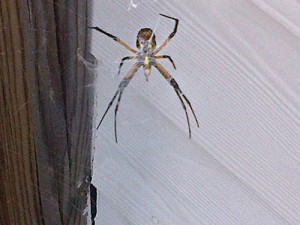 Public opinion studies have always shown one of the biggest human fears is spiders. Most people are afraid of them. Even some of my colleagues have been known to yelp when they find one. To anyone except maybe an arachnologist or entomologist, they’re not generally thought of as nice to look at.
Public opinion studies have always shown one of the biggest human fears is spiders. Most people are afraid of them. Even some of my colleagues have been known to yelp when they find one. To anyone except maybe an arachnologist or entomologist, they’re not generally thought of as nice to look at.
While most spiders are beneficial, the public doesn’t think of them that way. Most people can name five different spiders, but have you ever thought about how many types there are?
Let’s start with the arachnids. There are 11 orders; spiders make up one of these orders. Within the arachnids, there are about 640 families, which contain about 9,000 genera that are categorized in about 93,000 individual species. The spider group can be categorized in about 110 families that contains about 3,600 genera with about 39,000 species. So spiders account for a little more than one-third of the arachnid species.
Within this 39,000 species, about 100 species worldwide are considered a threat to humans. In North America, only two groups have been conclusively proven to be harmful to humans: the widows (Latrodectus spp.) and recluse spiders (Loxosceles spp.). There are others believed to be harmful, such as some of the sac spiders and hobo spider, but the evidence is circumstantial (Vetter and Isbister 2004, Krinsky 1987).
Identification tips

The black and yellow argiope (Argiope aurantia) spider with its webbing. Photos courtesy Frank Meek
With so many species — and the condition they’re in when received in a lab for identification — spiders are one of the most difficult creatures to identify accurately. Proper spider ID starts with determining to which family it belongs. From the family, the next step is to identify the genera, then the species.
■ Start with the fangs. Color and patterns cannot be the deciding factor of spider type. Identification starts with the fangs. In what direction do the fangs move, side to side or forward and backward?
■ Look at the lungs. Along with the fang configuration, look at the book lungs, which are found on the underside of the cephalothorax. All spiders will have one or two pairs of book lungs, which can be seen with a good, small hand lens.
■ The eyes have it. The eyes are one of the most important external organs to help identify spiders, which will typically have eight or fewer simple sets. The eye pattern, along with the fangs and book lungs, are keys to proper identification.
Condition is crucial
When sending a spider to a lab for identification, it’s important to collect and preserve the specimen properly so ID is more accurate. If possible, always collect the specimen live and place it in a large enough vial. Add rubbing alcohol and close the vial. The alcohol will kill the specimen and help preserve it until the lab can make an ID.
As much as you might want to, avoid smashing or killing the specimen because this makes it difficult, if not impossible, to identify it positively.
In addition to the spider, include a description of any webbing and general information about the area where the spider was found. All these clues can be helpful when trying to identify this wonderful group of animals.
Contact Meek, international technical and training director for Orkin, at fmeek@rollins.com.
Leave A Comment